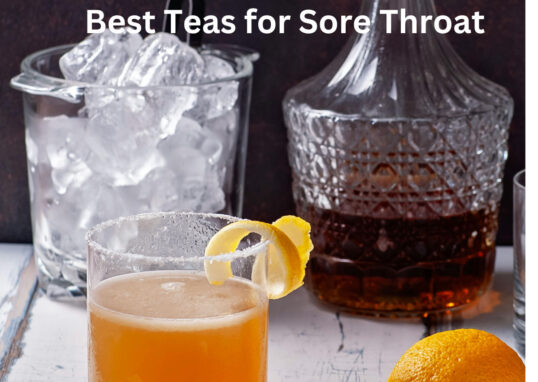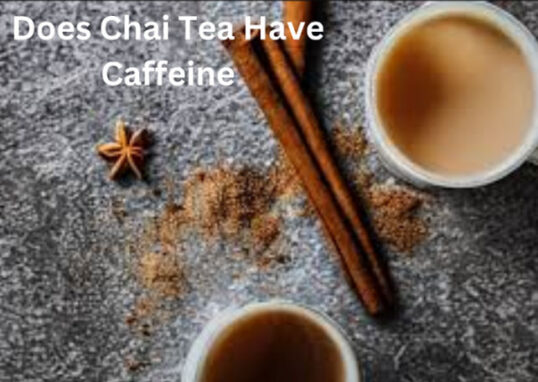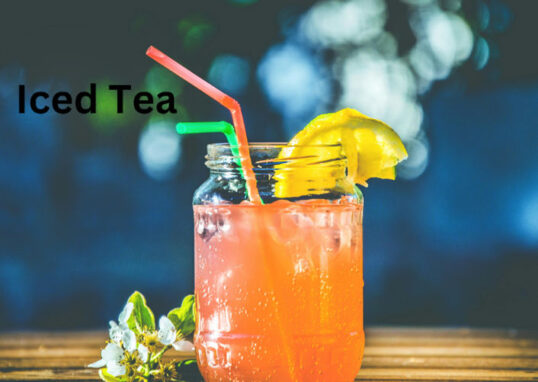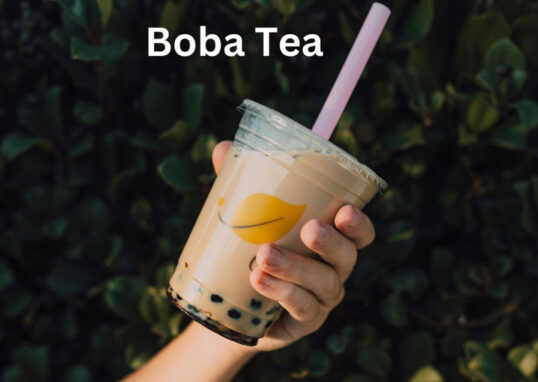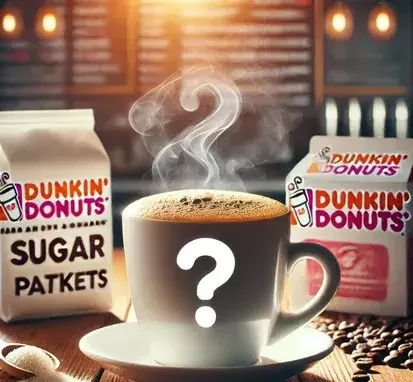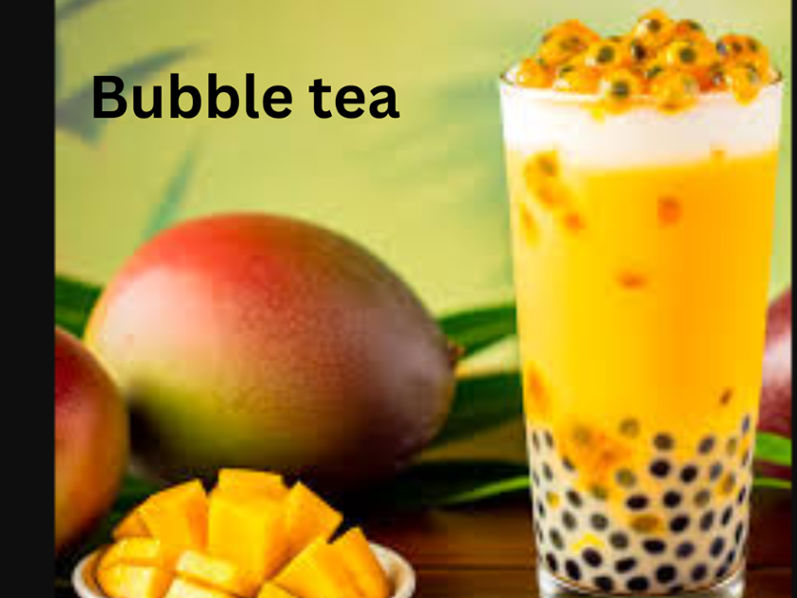
Bubble tea, also known as boba tea, has become an international sensation, beloved for its unique textures and flavors. This drink blends tea, milk, sweeteners, chewy tapioca pearls, or other toppings for a satisfying experience. Originating in Taiwan in the 1980s, bubble tea quickly gained popularity in East Asia before expanding globally, particularly in North America, Europe, and Australia. Its appeal lies in its flavor and the customizable combinations that allow people to choose their preferred tea, sweetness level, and toppings.
History and Origin (Taiwan in the 1980s)
Bubble tea originated in Taiwan in the 1980s among tea shop owners who aimed to create new ways for people to enjoy tea for a younger market. It’s attributed to the characteristic texture created by introducing tapioca pearls or a “chewable” aspect that made it different from any other beverage. According to one story, a popular origin credits this with Chun Shui Tang, a tea house in Taichung, Taiwan. The practice spread out rapidly in Taiwan and then the rest of the world; therefore, almost all the tea houses worldwide made this a mainstay.
Popularity and Increase in Global Culture
The spread of social media during the 2000s led to its unparalleled popularity with colorful drinks. Photos started popping up all over when this drink started being served in major cities across the globe, offering flavors and toppings that can be modified according to anyone’s taste. It became a pop culture icon worldwide, from brands opening worldwide to international tea festivals and boba merchandise. The visual attractiveness and playfulness of the drink have become a hallmark of the tasty, popular drink.
What is Bubble Tea?
The drink, which is widely known for its unique mixture of tea, milk, sweeteners, and a variety of toppings, especially the tapioca pearls, called boba, is adaptable in that it can either be consumed hot or cold. The tapioca pearls’ chewy feeling makes bubble tea different from other drinks. Although this is a form of a tea-based beverage, shops selling this liquid offer fruit-based drinks in case the rich, creamy flavor from the tea is too strong for an individual who craves a refreshing fruity flavor instead.
Key Ingredients
- Tea: This is normally a popular base taken as black, green or oolong tea and adds its characteristic flavor to this drink.
- Milk or Milk Replacements: This is purely a dairy-based drink historically. But now, options can be almond milk, soy milk, or even oat milk depending on an individual’s requirements.
- Sweeteners: The sweetener comes in syrup, honey, or sugar, although sweetness can be modified.
- Tapioca Pearls: These chewy, black pearls are made of tapioca starch, thus the “bubble” to bubble tea.
Explanation of “Boba” and the Term “Bubble Tea”
The term “bubble tea” actually means the small bubbles that come when you shake the drink, not the tapioca pearls. In Western culture, though, “boba” and “bubble tea” are used in place of each other. “Boba” is actually the term for the chewy tapioca pearls, which originated from Taiwanese slang for “large pearls.” Over time, the term “boba” became synonymous with the entire drink, especially in places such as North America.
Types of Bubble Tea
There are different flavors of bubble tea, according to tastes and preferences. The two most popular flavors are milk tea and fruit tea.
Milk Tea vs. Fruit Tea
- Milk Tea is a creamy bubble tea infused with milk or a milk substitute. It is often richer and fuller to the palate, but it is usually served with more traditional toppings such as tapioca pearls or grass jelly.
- Fruit Tea: Fruit tea does not contain milk and is light and refreshing. Often made with green or black tea and flavored syrups or fresh fruit juice, fruit teas are known to be paired with boba or fruit jelly. It is quite a playful pop of flavor.
Classic Flavors
- Taro Milk Tea: This tea is famous for its deep purple color and nutty, slightly sweet flavor.
- Matcha Milk Tea: Earthy and a little bit bitter, matcha is green tea powder with a unique taste and many antioxidant properties.
- Black Milk Tea: This traditional one has an intense tea flavor, milk content, and just a hint of sweetness.
Fruit Flavors
- Mango: Mango is a fruit from tropical regions, and its sweet taste is well-suited to mango flavors in fruit teas.
- Passion Fruit: a bit tart and has that floral note, so the passion fruit will give refreshing, bright flavors to the drink.
Specialty Versions
- Jelly: Adding grass, coconut, or lychee jelly would give a better feel and flavour.
- Popping Boba: The juice-filled pearls are fun to pop in your mouth, and the fruit-flavored juice gives them a wonderful twist.
- Cheese Foam: This unusual but extremely fashionable topping is creamy, lightly salted foam on top of the drink, which contrasts the tea’s sweetness.
Preparation Method of Bubble Tea
Preparing bubble tea involves a few steps, which are important as they give it the flavor and texture that make it so popular. The process can be divided into three steps: tea brewing, pearl preparation, and assembling the drink.
Brewing the Tea
Choosing the right type of tea: It does not matter which one wants to use because black, green, or oolong tea will work just fine. Of course, high-grade loose-leaf tea offers a more substantial flavor.
Preparation:
- Water temperature: Water temperature can also differ depending on the teas used. Black tea requires 200°F or 93°C water for brewing. Usually, for green tea brewing, the temperature is 160-180°F or 71-82°C so that it doesn’t get bitter.
- Steeping Time: Steep the tea for around 3-5 minutes or according to the one used. Over-stepping brings out the bitterness of the tea.
- Cooling: Brew tea at room temperature beforehand use. This is particularly important if you are making cold forms of bubble tea.
How to Prepare the Pearls
Choice of Pearls: Tapioca pearls are the most conventionally used among the thousands of options on the market. Fruit-flavoured and jelly pearls will do; however, the appropriate pearls will definitely bring out the difference in drink texture.
Prepare the Tapioca Pearls
- Bring it to a rolling boil then add the tapioca pearls in a large pot filled with water. Common preparation time is 30 minutes, but check in for specific times on its pack.
- Let rest in hot water for additional 30 minutes to turn soft as chewy.
- Rinsing: Rinse the pearls under cold water to remove excess starch that can make pearls stick to one another.
- Sweetening: Toss the pearls in a simple syrup made from dissolved sugar and water to create a sweet taste.
- Building the Drink
Using the Right Glass: This beverage is served using clear cups with wide straws for the pearls.
Layering Ingredients:
Add Pearls: Scoop generously cooked tapioca pearls at the bottom of the cup.
Add Tea: Pour brewed tea into it with milk or milk substitutes if desired for milk tea.
Adjust sweetness based on taste by adding the necessary amount of syrup
Add your topping: some would put popping boba or jelly, or even whipped cream.
3.\tShaking or Stirring: Shake the drink well or stir it well to mix the two ingredients together. Serve with a wide straw for sipping and enjoying the combination of flavors and textures.
Variations Around the World
Bubble tea has inspired a myriad of regional variations, showcasing local flavors and preferences. Some of the popular variations are represented from various countries:
- Japanese Matcha Boba: In Japan, matcha, powder green tea, is being used to create a dense earthy bubble tea often milk or milk alternatives and condense milk to add it sweet creaminess.
- Thai Milk Tea This is brightly colored orange and is made using strongly brewed black tea, spices, and sweetened condensed milk. It is commonly served over ice with tapioca pearls or other toppings as a refreshing treat.
- Fruit Variations of Tea: Quite a few countries have applied fruit tea variations, applying local fruits to make those colorful and refreshing drinks. For example, in the Philippines, you can obtain bubble tea flavored with ube, which is this purple-colored yam type, or calamansi as a form of citrus flavor.
- Korean Variations: South Korean versions actually have some toppings like cheese foam, but it does indeed contain sweet red beans or rice cakes flavored with varied flavors.
Nutrition Facts and Health Awareness
When enjoying bubble tea, there has to be nutrition facts thought about as well as a few healthier options.
Caloric Content and Sugar Level
- Average Calorie Content: Depending on what is added and size of servings, an average serving of bubble tea is 200-600 calories, and milk tea with extras and add-ins tends to sit at the higher end of that scale.
- Sugar content: Most of the bubble tea drinks have a lot of sugar content, and most of them have more than 30 grams in one serving. This is mainly due to the added sugar in the tea and the syrups used.
Healthier Alternatives and Variations - Lower Sugar Content: Most of the bubble tea shops can be ordered with low sugar content or even with honey or agave syrup.
- Alternative milk: Almond milk and coconut milk could be substituted for regular whole milk or cream; oat milk is another alternative.
- More toppings: Fresh fruits, chia seeds, grass jelly, and the like, which are not as fattening and are good sources of nutrition and fiber.
- DIY Bubble Tea You should be able to control totally what you put in the tea, and you will know just how sweet you want it. Using different teas, sweeteners, and toppings, you can experiment and produce a healthier version suited to your taste buds.

